
Underwater Photographer and marine biologist Bella Zandoná shares her expertise diving the wreck of Hilma Hooker, off the Dutch Caribbean island of Bonaire
Phrases and photos by Bella Zandoná
The dive begins with a quiet swim by Bonaire’s blue waters. At first, it’s a fantastic sandy terrain with scattered coral heads opening up right into a thriving reef, which is nothing uncommon for Bonaire’s dive websites.
Virtually abruptly, a shadow kinds in entrance of you: flat, darkish, and large. At first, it seems like a wall rising out of nowhere. Then your mind catches up … it’s the hull of a ship.
The wreck of Hilma Hooker appears to look unexpectedly, a 236-foot (72 metre) cargo vessel mendacity on her aspect, and even after a number of dives across the wreck, I nonetheless get the identical emotional rush when it comes into view.
There’s one thing about diving a wreck that feels totally different from some other sort of diving. Whereas coral reefs develop over centuries, every one a gradual masterpiece constructed by hundreds of tiny animals, a wreck is sudden.
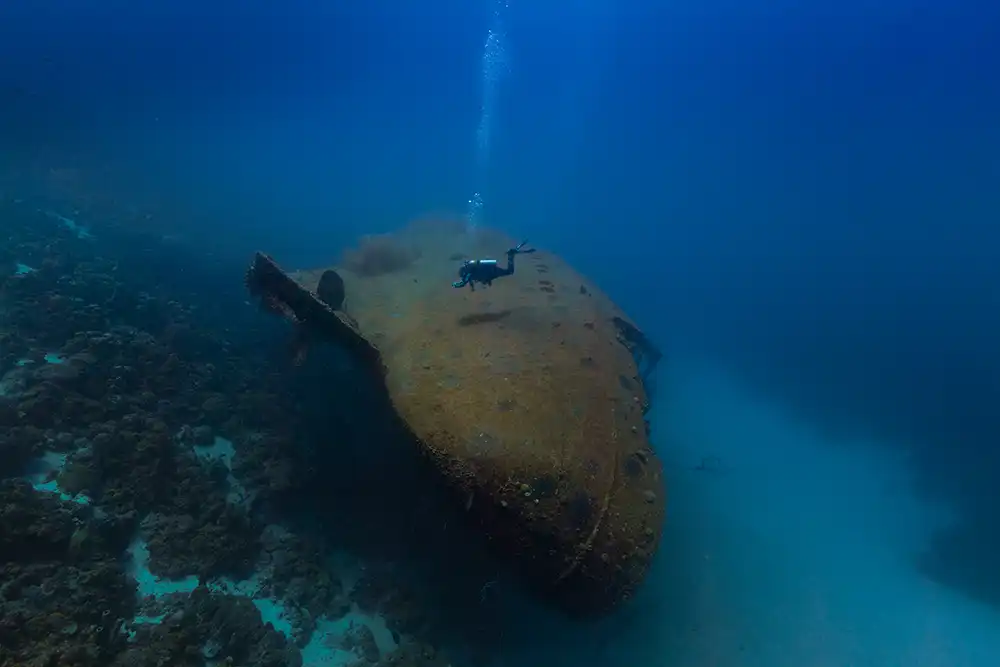
It’s a complete construction that doesn’t belong, doing the precise reverse of what a ship is constructed to do, being claimed by the ocean and reworked right into a reef.
Hilma Hooker is an ideal instance of that transformation. She was constructed to haul cargo, seized whereas smuggling marijuana, and now she’s one in every of Bonaire’s most well-known dive websites, a spot the place human historical past and marine life come collectively.
Hilma Hooker’s demise
Hilma Hooker’s historical past is a wild one. Launched within the Netherlands in Might 1951 beneath the identify Midlsand, she spent three many years carrying items beneath six totally different names and 7 totally different homeowners.
She nearly sank in 1975 after working aground in The Bahamas, and was set to be offered for scrap, however was bought by a Panamanian transport firm.
She would change arms once more in 1976, earlier than being offered to her ultimate proprietor, the Colombian San Andrés Transport Line, in 1979.
Associated articles
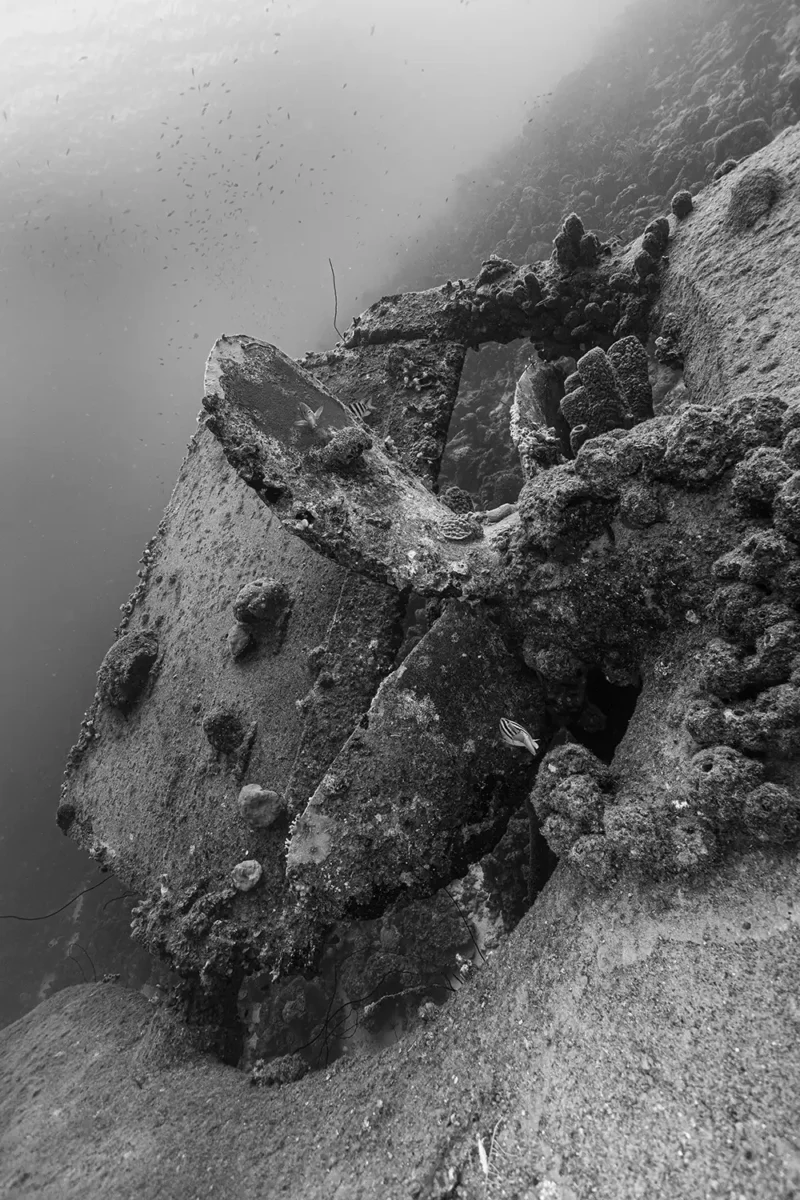
Her most notorious chapter started in 1984, when she was towed to the port of Kralendijk in Bonaire after struggling mechanical issues together with her engine.
Native authorities boarded the ship for an inspection, however the captain was unable to offer any of the required registration papers, so he and his crew have been detained.
Upon additional investigation, 25,000 kilos (11,000 kg) of marijuana was found hidden behind a false bulkhead. For weeks after the ship sat in limbo, no proprietor stepping ahead.
Finally, as a result of lack of upkeep, Hilma Hooker started to tackle water. Fearing the ship would sink and block entry to the docks, she was towed out to sea on 7 September 1984.
In line with locals, she started itemizing increasingly as the times glided by, till on September 12, 1984, she started taking up water by her portholes, which sealed her destiny.
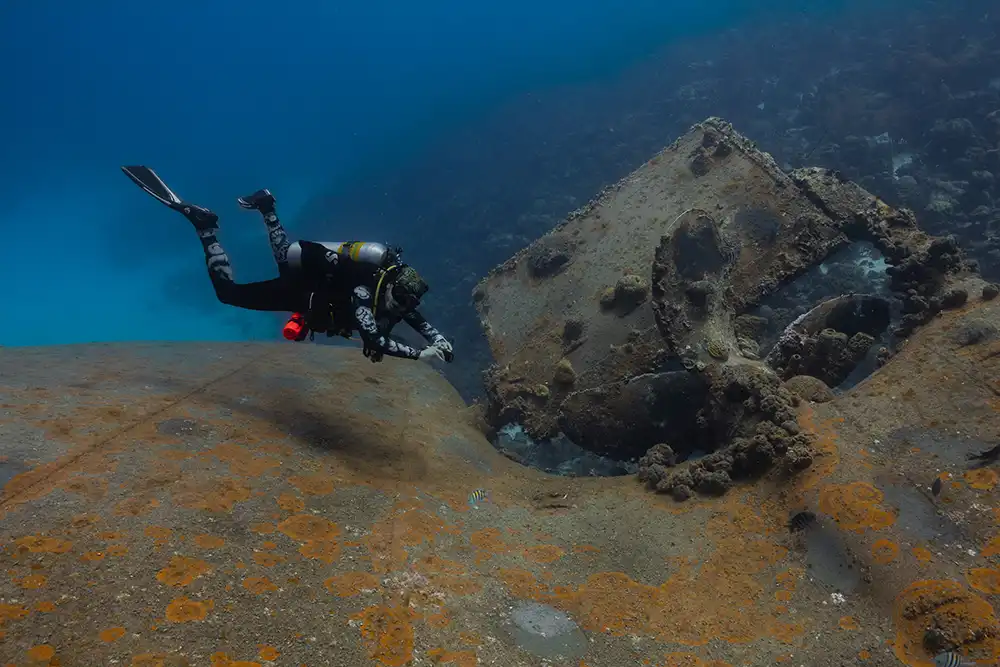
At 9:08 am, Hilma Hooker rolled over onto her starboard aspect and took solely two minutes to sink beneath the waves. She got here to relaxation between two reef techniques on the southern leeward coast of Bonaire, referred to as dive web site 43, resting on her starboard aspect at a depth of about 100 toes (30 meters).
Diving the Hilma Hooker’s wreck
At the moment, Hilma Hooker is greater than only a wreck. She’s a man-made reef, teeming with marine life. For a lot of divers, myself included, she holds a particular place of their diving journey.
I earned my wreck diving certification studying to navigate round her corridors and large hull. There’s something each eerie and thrilling about exploring a ship that when smuggled medication however now serves as a house to Bonaire’s marine life.
The very first thing you discover in regards to the wreck is its dimension. Since she rests on her aspect, your entire profile is dramatic.
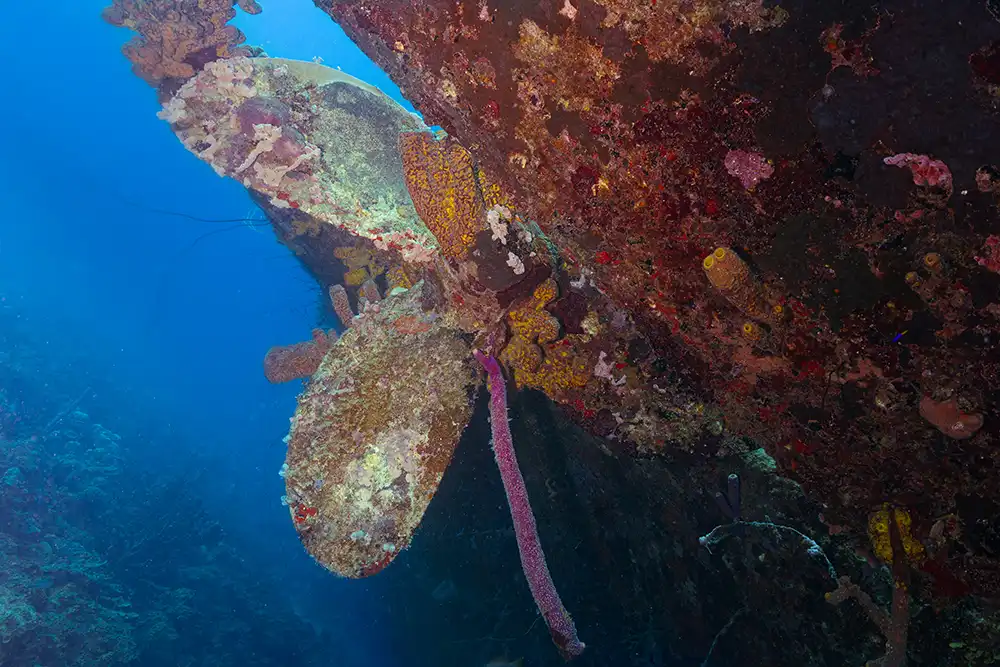
The deck faces towards the open ocean, whereas the keel rises up like a wall. The bow and stern are simple to recognise, and you’ll swim the size of the wreck (240 ft/72 m) in a single dive. However in my view, you want a number of dives to actually recognize all her particulars.
As you get nearer, the wreck begins to disclose textures. Coral has colonised the metal; sponges and sea followers cling to each floor.
Colleges of fish, barracuda, and large tarpon patrol the wreck, and the occasional seahorse hides within the development alongside the rails.
Look slightly nearer, and the smaller residents seem. Blennies peeking from holes within the coral, Christmas tree worms retreating at any motion, and eels weaving by cracks within the hull.
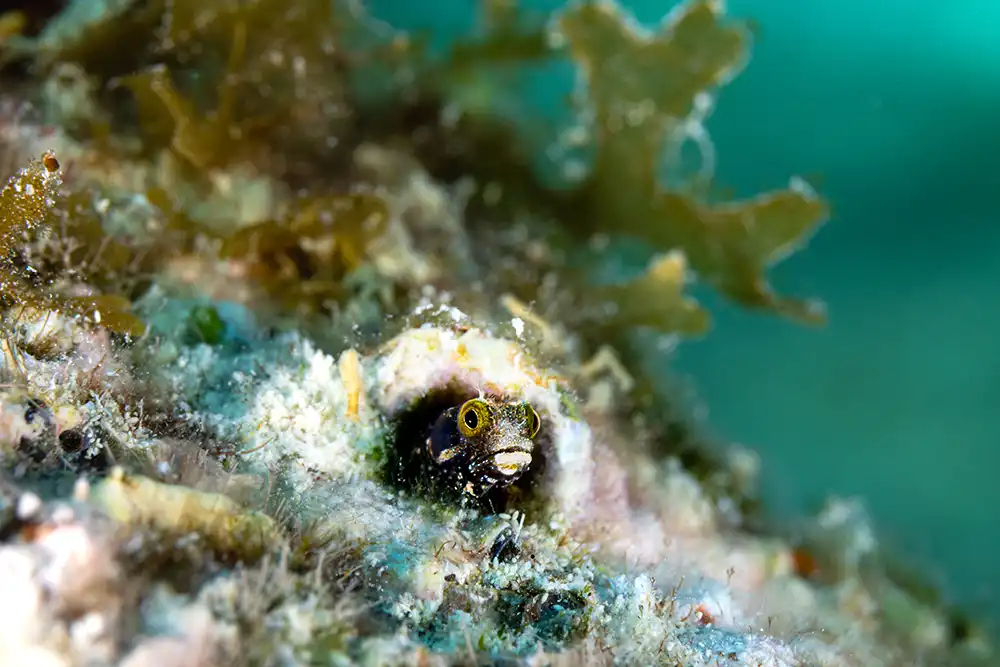
Probably the most hanging sights across the wreck are the lobsters hiding beneath it. A few of them develop to actually huge sizes, virtually monsters, tucked into the nooks and crannies alongside the hull.
For me, photographing Hilma Hooker was each a problem and a reward. Extensive-angle pictures is one of the best ways to seize the dimensions of the wreck, however it comes with its personal set of hurdles.
At 100ft beneath the floor, the wreck’s depth signifies that the reds and oranges are largely gone by the point you attain it.
Visibility can differ and lightweight is restricted, so you want to mess around with robust strobes or the cautious use of pure gentle to convey out color and distinction.

Backscatter is an issue for super-wide pictures, so I place myself to benefit from no matter daylight is reaching the wreck. I attempt to steadiness depth, angle, and lightweight to make the scene really feel each dramatic however nonetheless true to life.
Capturing at this web site forces you to think twice about composition, lighting, and color all collectively – which is a part of what makes Hilma Hooker such a rewarding topic.
I shoot with a Canon R6, often paired with a 15-30mm wide-angle lens for wrecks like this. To seize the ship’s dimension, I body my dive buddy in lots of my pictures, giving perspective and scale. With out a diver, it may be onerous to speak simply how huge the wreck actually is.
For the reason that wreck rests at an angle, you’ll be able to play with perspective and differing angles, however in fact, plan forward, since at that depth, each minute counts.

Bonaire is filled with unbelievable dive websites. From reefs to piers – however the Hilma Hooker stands out as a result of it combines so many parts directly. There’s the drama of the descent and that first glimpse of the ship.
There’s the backstory, filled with smugglers and scandal. There’s the sheer number of marine life, from large tarpon to tiny sea horses. And for photographers, there’s the problem of capturing a topic that’s each huge and complex on the similar time.
This dive web site is a narrative instructed in metal, drama and marine life that embodies the way in which human historical past and ocean ecosystems can collide in spectacular vogue.
For divers, Hilma Hooker affords journey, challenges and sweetness – an expertise that stays with you lengthy after you floor.
Isabella Zandoná is a marine biologist and underwater photographer born in São Paulo, Brazil, and now based mostly in Seattle. Yow will discover a portfolio of her work in DIVE’s Featured Photographers part, and on Instagram @divingwithbella

